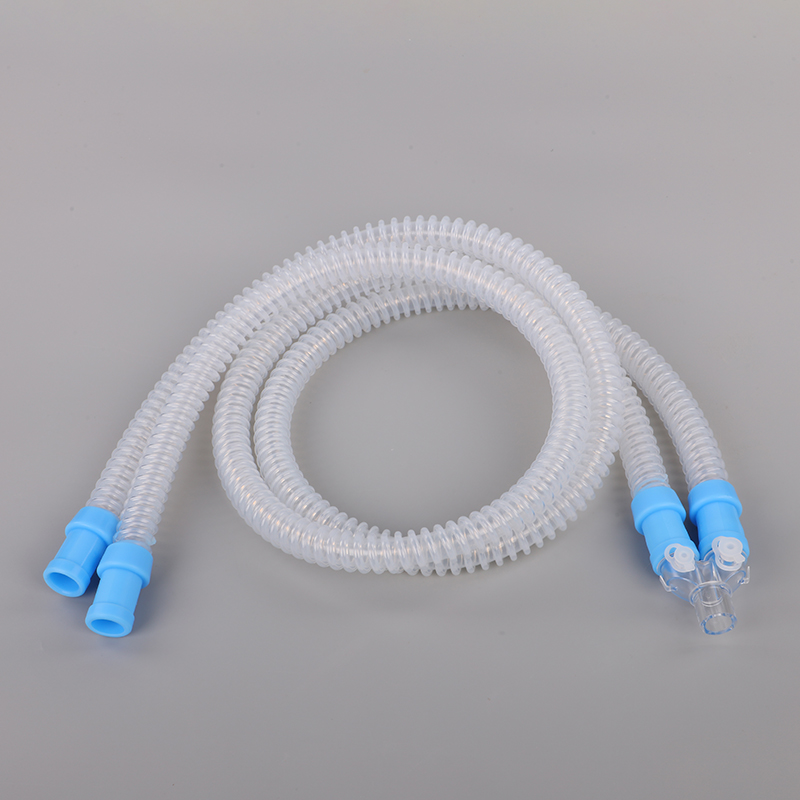-



What Are The Safety Considerations When Using Suction Connecting Tubes?
Views: 0 Author: Site Editor Publish Time: 2024-11-08 Origin: Site

When it comes to suction therapy, the use of suction connecting tubes is crucial for effective and safe patient care. These tubes are designed to connect suction devices to the patient’s airway, allowing for the removal of secretions and other fluids. However, there are several safety considerations that healthcare professionals must keep in mind when using these tubes. From ensuring proper sterilization to monitoring for signs of infection, understanding the potential risks and taking appropriate precautions is essential for ensuring the safety and well-being of patients undergoing suction therapy.
What is a suction connecting tube?
Suction connecting tubes are an essential component of suction therapy, which is used to remove secretions and other fluids from the airway. These tubes are designed to connect the suction device to the patient’s airway, allowing for effective and safe suctioning. They are typically made of flexible materials, such as silicone or PVC, and come in various sizes to accommodate different patient needs.
One of the key features of suction connecting tubes is their ability to withstand high negative pressure, which is necessary for effective suctioning. They also have smooth inner surfaces to prevent the accumulation of secretions and facilitate easy cleaning. Some tubes may also have additional features, such as a one-way valve or a side port, to further enhance their functionality.
In addition to their practical use, suction connecting tubes also play a role in ensuring patient safety. They are designed to minimize the risk of injury to the airway and reduce the chances of infection. Proper handling and maintenance of these tubes are crucial for preventing complications and ensuring the well-being of the patient.
How does suction therapy work?
Suction therapy is a medical procedure used to remove secretions, mucus, or other fluids from the airway or other body cavities. It is commonly used in patients who are unable to clear their airways due to conditions such as respiratory distress, excessive secretions, or impaired cough reflex. The procedure involves using a suction device, such as a suction machine or a portable suction pump, along with suction connecting tubes to create a negative pressure that draws out the unwanted substances.
The suction therapy process typically involves the following steps:
1. Preparation: Before the procedure, the healthcare provider will gather all the necessary equipment, including the suction device, connecting tubes, and sterile suction catheters. They will also ensure that the suction device is properly calibrated and ready for use.
2. Insertion: The healthcare provider will carefully insert the suction catheter through the suction connecting tube and into the patient’s airway or the cavity that needs to be suctioned. They will ensure that the catheter is inserted to the appropriate depth to avoid causing any trauma or discomfort to the patient.
3. Suctioning: Once the catheter is in place, the healthcare provider will activate the suction device to create a negative pressure. They will then gently maneuver the catheter to remove the secretions or fluids from the airway or cavity. The suction pressure will be carefully monitored to ensure that it is within the safe range for the patient.
4. Monitoring: Throughout the suction therapy procedure, the healthcare provider will closely monitor the patient’s vital signs and overall condition. They will assess the effectiveness of the suctioning and make any necessary adjustments to the suction pressure or technique as needed.
5. Removal: Once the suctioning is complete, the healthcare provider will carefully remove the suction catheter from the patient’s airway or cavity. They will then clean and disinfect the suction connecting tubes and other equipment according to the established protocols.
Suction therapy is a valuable tool in managing respiratory distress and ensuring patient safety. It is important for healthcare providers to be knowledgeable about the procedure and follow proper protocols to minimize the risk of complications and ensure the well-being of the patient.
What are the types of suction connecting tubes?
Suction connecting tubes are essential components of suction therapy, and there are several types available to suit different needs and preferences. Each type has its own unique features and advantages, making it important for healthcare professionals to choose the most appropriate one for their patients. Let’s explore the different types of suction connecting tubes in more detail:
1. Standard suction connecting tubes: These are the most commonly used suction connecting tubes. They are typically made of flexible materials such as silicone or PVC and come in various sizes to accommodate different patient needs. Standard suction connecting tubes are designed to withstand high negative pressure and have smooth inner surfaces to prevent the accumulation of secretions. They are suitable for general suction therapy applications.
2. Closed suction connecting tubes: Closed suction connecting tubes are designed with a built-in mechanism that allows for suctioning without the need to disconnect the tube from the suction device. This feature is particularly useful in situations where frequent suctioning is required, as it reduces the risk of contamination and prevents the introduction of bacteria into the patient’s airway. Closed suction connecting tubes are often used in critically ill patients or those on mechanical ventilation.
3. Disposable suction connecting tubes: Disposable suction connecting tubes are designed for single-use only. They are typically made of lightweight and cost-effective materials, such as plastic or paper, and are discarded after each use. Disposable suction connecting tubes offer the advantage of convenience and hygiene, as they eliminate the need for cleaning and sterilization between uses. However, they may not be as durable or effective as reusable tubes.
4. Specialty suction connecting tubes: Specialty suction connecting tubes are designed for specific applications or patient populations. For example, pediatric suction connecting tubes are smaller in size and have softer materials to accommodate the delicate airways of infants and young children. Similarly, bariatric suction connecting tubes are larger in diameter and reinforced to handle the increased suction requirements of obese patients. Specialty suction connecting tubes offer tailored solutions for unique patient needs.
5. Antimicrobial suction connecting tubes: Antimicrobial suction connecting tubes are coated with antimicrobial agents to help reduce the risk of infection. These tubes are particularly beneficial in high-risk patients or those with compromised immune systems. The antimicrobial coating helps inhibit the growth of bacteria and other microorganisms, providing an added layer of protection during suction therapy.
What are the safety considerations when using suction connecting tubes?
When using suction connecting tubes for suction therapy, there are several safety considerations that healthcare professionals must keep in mind to ensure the well-being of the patient. These considerations include:
1. Infection control: Proper infection control measures are crucial when handling suction connecting tubes. Healthcare professionals should always wash their hands before and after handling the tubes and wear gloves to minimize the risk of contamination. It is also important to clean and disinfect the tubes according to the established protocols to prevent the transmission of infections.
2. Sterilization: Sterilization of suction connecting tubes is essential to eliminate any potential pathogens. There are different sterilization methods available, such as steam sterilization, ethylene oxide sterilization, and radiation sterilization. The choice of sterilization method depends on the material and design of the tubes. Healthcare professionals should follow the manufacturer’s instructions for proper sterilization and ensure that the tubes are sterile before use.
3. Patient monitoring: During suction therapy, healthcare professionals should closely monitor the patient’s vital signs and overall condition. They should assess the effectiveness of the suctioning and look for any signs of complications, such as bleeding, trauma, or infection. If any adverse events occur, appropriate interventions should be implemented promptly.
4. Tube size and suction pressure: Selecting the appropriate tube size and suction pressure is crucial for ensuring patient safety. Healthcare professionals should choose a tube size that is appropriate for the patient’s age and airway size to avoid causing any trauma or discomfort. The suction pressure should also be carefully monitored to ensure that it is within the safe range for the patient.
5. Proper technique: Proper technique is essential when performing suction therapy. Healthcare professionals should use a sterile suction catheter and avoid touching the suctioning tip to prevent contamination. They should also avoid excessive suctioning, as it can cause irritation or damage to the airway. If resistance is encountered during suctioning, healthcare professionals should not force the catheter further, as it may cause trauma or dislodge any clots.
6. Documentation: Accurate documentation is important for tracking the patient’s progress and any interventions performed during suction therapy. Healthcare professionals should document the type of suction connecting tube used, the suction pressure applied, the frequency of suctioning, and any observations or complications encountered. This information is valuable for continuity of care and communication among healthcare providers.
Conclusion
In conclusion, suction connecting tubes are vital components of suction therapy, and their proper use is essential for ensuring patient safety and well-being. By following the safety considerations outlined in this article, healthcare professionals can minimize the risk of complications and provide effective and safe suction therapy to their patients. It is important to stay updated on the latest guidelines and best practices for using suction connecting tubes to ensure the highest standards of patient care.
Related Products
CONTACT US
NO.176, Gaoxin 5th Road, High-tech Industrial Park, Rizhao City276800, Shandong Province, China +86-13396234532 +86-13396234532Copyright © 2023 ZhenFu Group All Rights Reserved. Technology By leadong.com | Sitemap | Privacy Policy
























